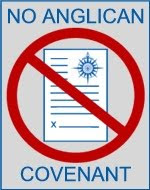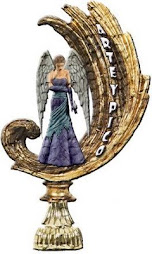I started wondering if there were any Greek sources regarding Saint Christopher, and I did some research. I learned that a Saint Christopher actually did exist, that he was a soldier who was martyred around the year 308 in Antioch. I even found three “Acts of St. Christopher” and read them. I no longer believe that my parish is named after a non-existent saint, we are a parish named after a fourth-century African martyr.

St. Christopher was a member of the north African tribe of the Marmaritae. He was captured by Roman forces during the emperor Diocletian's campaign against the Marmaritae in late 301/early 302 and was transported for service in a Roman garrison in or near Antioch in Syria. He was baptized by the refugee bishop Peter of Alexandria and was martyred on 9 July 308.
Bishop Peter arranged for the transport of his remains back to Marmarica in 311. The name “Christopher” means Bearer of Christ and was probably the name he took on at baptism. According to the various Acts of St. Christopher, his original name was Reprebus which is probably a corruption of the name Reprobus, which means “wicked” in Latin. So at baptism, a man called wicked became a man who bears Christ. But ‘Christopher’ may have been an honorific title, and some scholars believe that Christopher’s actual name may have been lost and that he is really identifiable with the Egyptian martyr known as St. Menas. Christopher was martyred for refusing to sacrifice to the emperor. His memory was preserved in Antioch, but his relics were transported to his homeland and that is where is original cult was located. There are icons of St. Christopher and they are not like the image on the Roman Catholic medals. The images of St. Christopher I've posted here are of a man with the head of a dog! The Greeks used to refer to those lands outside of their civilization as being inhabited by cannibals and dog-headed people, and since Christopher was from North Africa, most probably the nation we call Libya today, some must have said he came from the land of dog-headed cannibals. The authors of the Acts of St. Christopher took this reference literally, and one account carries this description: There was a certain man who, since he was a foreigner from the land of man-eaters, had a terrible appearance, a dog's head as it were. Another account describes Christopher’s encounter a woman on the street: And while he prayed, a woman came out of the city in order to go and worship the idols, and trembled at the sight of the saint. Her face dropped as she saw the the body of a man, but the head of a dog, and she ran to the city and cried out... In this account, the king calls Christopher “Dog-headed and evil troublemaker.”
According to the Acts of St. Christopher, he was taken as a soldier from his home in North Africa and ended up in the Syrian city of Antioch. A persecution was under way, and the soldier Reprebus had recently converted and become Christopher. He was protecting some Christians who were being arrested. He covered his dog-head with the sleeves of his cloak and while being beaten by the arresting officer, said, “I am possessed by Christ, I have been overcome by the Savior, and I am not able to do anything to you. However, if you exasperate my heart, you will not remain in my presence, nor will your corrupt king." The soldier ran off and told the king what had happened: "There is a certain man of terrible appearance, one who towers over most men, who appeared in sight of all the people when the edict was being published by the governor. In fact, who could explain the appearance of this apparition, except perhaps that the God of the Christians heard their prayers and sent him to help them? Unless you hurry and kill him he will turn all from the sacrifices of the gods." The king said to him, "You have a demon, and he appeared to you this way. What did you see? Speak." He replied, "I tell my lord what I saw. His head was terrifying, like that of a dog. His hair was very long, and gleamed like gold. His eyes were like the morning star, and his teeth like the tusks of a boar. Words are not sufficient to tell of his greatness. Moreover, he said the most disgraceful things against you and the gods. So when I heard such talk, I began to beat him. But he said to me, 'I am possessed by Christ, but if I were not, I would kill you and your king.' And I therefore report these things to you my lord king, that you might know that what I say about this man is true." The king said, "Is he one of our men? Why does he say such things?" The other replied, "I do not know, my lord." Then the king gave orders to his soldiers, saying, "Go and get him. If he does not agree to come with you, rip him to pieces, only bring his head to me that I might see what he was like, if it was him or another."

In the meantime, Christopher managed to convert most of the soldiers, who refused to arrest him, but he was eventually taken before the king. He refused to sacrifice to the King’s idols. The king had a great idea in which Christopher would be locked in a room with two prostitutes who would “convert him to their lusts” but instead Christopher converted them to the Lord and they went to suffer their martyrdom after insulting the king and his idols.
The story of their martyrdom is right up there with Perpetua and Felicity in the terrible tortures they endured in Christ’s name. The king was quite angry that his plan didn’t work, so he had a bronze bench placed in the town square and had Christopher nailed to the bench. Then he ordered that plenty of wood be brought, and that a great deal of olive nuts,18 measures of olive oil, and a lot of pitch be poured over the wood, that was how they fueled the fire. The wind blew the flames so that some houses caught fire, Christopher stood up in the midst of the flames and said, “I saw myself standing in the midst of a city, and saw a beautiful man whose face shone like a thousand suns. Then another man with a terrible appearance attacked him. They fought, but the man of light was victorious.” Then ten thousand people watching this said, “There is one God, he in whom saint Christopher believes. He has certainly not labored in vain. He knows the one to whom he fled. And we believe, hoping that we can save ourselves through you, Lord God." And ten thousand people believed at the same time, and cried out, saying, "Almighty God, we believe in you. Take pity on us, Our Savior, and make us your worthy servants, Christ, and do not give us wealth for your booty; but give to your servants, Lord, the bath of immortality and the garment of incorruption, because yours is the glory forever and ever, amen." The next morning Christopher and the ten thousand stood out where the fires had been and chanted psalms, attracting the king’s troops once again. Three priests appeared and baptized the newly converted, while Christopher was arrested. His hair was pulled, he was crushed with huge stones and then dragged about by his arms throughout the streets. Christopher still refused to recant, so the king commanded that he be beheaded and cremated. Christopher was taken to the site where he would be executed. Suddenly there was an earthquake, and Christopher saw the heavens open and the Lord appear. A throne was brought out and the Lord sat on the throne. Christopher said, "How, in word or thought, will I praise you, Lord, that you have deigned to reveal your glory to me your humble servant?" The Lord said to him, "You are more blessed than many, and will be called my most beloved servant, and blessed will those souls be who have merited possession of your relics. I shall heed no longer the sins of those who have approached me through your intercession. I swear by my glory to you that they shall attain paradise." Christopher replied, "If I have found favor in your sight, Lord my God, grant me the confidence to speak to you." The Lord responded, "Say what you will." The saint replied, saying, "Lord, grant my corpse this second favor, that all who possess a part of my relics will merit such grace that no evil spirit nor bodily sickness will cower them, and drive from them every evil desire. Lord my God, whether it be a city, larger area, or small locality where lies some of my relics, let not hail-shower, crop-disease or vine-sterility prevail there; but wherever my relics travel, if those regions have been harmed, grant them the grace of my presence as it were, Lord my God, so that all the inhabitants of those regions may richly receive the produce of their cultivation, and filled with your grace wholeheartedly glorify your holy name. Act thus, Lord my God." As you can see, he was really thinking ahead! And the Lord replied, "It will be as you request. I will not cause you sadness. And so you have come, ascend to your brothers. For they all wonder at you, and my army of angels desires to see you." And when he had said this, he departed, and went to the place which had been prepared and said to the executioner, "Come, son, do what has been commanded. But I adjure you, by the God who watches over earth's orb, not to judge me." And upon saying these things, he crossed himself, and bending his knees he stretched out his neck; and in this manner his head was cut off. He perfected his martyrdom on a Sunday, at the 7th hour.

Tertullian said, “The blood of the martyrs is the seed of the Church” and while I have trouble believing that ten thousand people were converted even before he was martyred, the fact that the martyrdom of Christopher was remembered tells me that his witness was important to the Christians of Antioch. His relics were returned to his homeland, and a church was named after him in Bythinia in 452.
I always find the stories of the martyrs to be inspiring, and their steadfast faith is a model for all of us. Even though the Acts of St. Christopher are full of stories just as strange as the Roman story of Christopher, we can put away the image of a giant carrying the Christ child, but instead of replacing that image with the "dog-headed" saint, we can replace it with the story of a martyr from North Africa who stood up against his persecutors and prayed that he could still do good for humanity even after his death. This St. Christopher is one who can be a model for us.
JCF, a Dance Party regular, commented that there is an account which said that St. Christopher was so beautiful that everyone who looked at him was smitten or overcome with lust, so St. Christopher asked God to give him a dog's head to stop all that lustin'. I like that story.
Almighty God, who gave to your servant Christopher boldness to confess the Name of our Savior Jesus Christ before the rulers of this world, and courage to die for this faith: Grant that we may always be ready to give a reason for the hope that is in us, and to suffer gladly for the sake of our Lord Jesus Christ; who lives and reigns with you and the Holy Spirit, one God, for ever and ever. Amen.



























